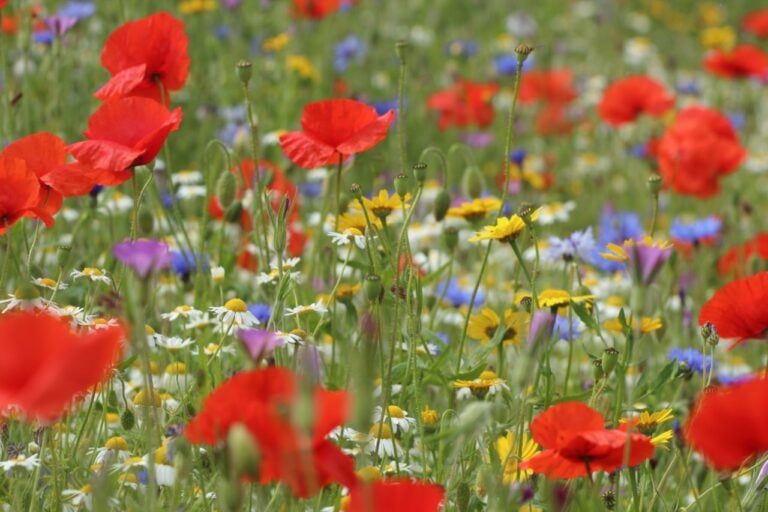Using Cornfield Annuals as Nurse Cover
In certain situations it is necessary or desirable to obtain a rapid establishment of ground cover. It is useful to stabilise soil surface of engineered banks or to achieve a rapid green cover for aesthetic reasons.
Meadow and grassland mixtures are mainly composed of slow growing perennial grasses and wild flowers which, when sown at the required seeding rates, are designed to take at least one growing season to establish full ground cover and usually only flower in their second season. Pushing the establishment of these components by increasing the sowing rate, or adding fertilisers is not advisable as in most situations it would seriously compromise the end result.
The best way to achieve rapid cover is to sow a temporary cover of additional species in combination with the main mixture. The additional species should have rapid establishment on a range of soils types, not be nitrogen fixing (i.e. not clovers or legumes)and be annuals or have a short lived life cycle so they will not persist in established grassland.
This technique, borrowed from agricultural practices, is called sowing a nurse cover crop. Potentially a wide variety of seeds could be used in this role including Cornfield Annual wild flower mixtures, annual grass eg. Westerwolds Ryegrass and other species such as wheat or barley have also been tried.
For quicker flowering results when sowing a meadow mixture, we recommend combining meadow seeds with a cornfield annual mixture as a temporary nurse cover. This will help fill space and to provide some flowering colour and interest in the first season.
When using this method both mixtures are sown together at the same time on to a clean, prepared, bare soil seedbed. Sow the meadow mixture at its normal sowing rate of 4g/m2 as this will deliver the long-term ground cover and diversity and add cornfield annuals to this at 2g/m2 to give a total combined sowing rate of 6g/m2.
We have seen some excellent results following the use of cornfield annuals. It would seem that the growth of the annuals in the early summer can suppress weed growth, and moderate the vigour of the faster growing perennials and grasses to produce a more open and balanced sward. Yellow Rattle also has a better chance to complete its (annual) life cycle under this regime.
Note: It is very important, particularly on fertile soils, that the annual growth is cut back as soon as flowering declines or as soon as the cover vegetation collapses (usually late July from autumn sowing; early August from spring sowing). The cuttings are usually substantial and must be removed. This cut will reveal the developing meadow mixture and allow it to grow and develop into the autumn unhindered. A delay in cutting will compromise the main sowing, particularly if the cover vegetation has collapsed. Do not wait for the annuals to set seed, there is no point as they cannot grow in established grassland.


